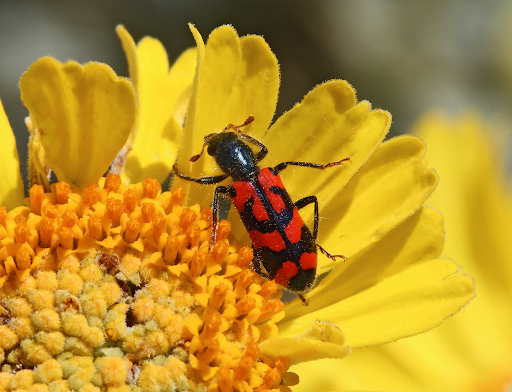Creating a Pollinator Paradise: A Colorado Gardener’s Guide
There’s nothing quite like the magic of watching a hummingbird hover delicately over bright red blooms or seeing a butterfly dance from flower to flower in your own backyard. These moments remind us that our gardens can be so much more than beautiful spaces—they can be vital lifelines for the pollinators that keep our ecosystems thriving.
Colorado’s diverse landscape, from the high peaks to the eastern plains, offers unique opportunities and challenges for pollinator gardening. While the specific plants that will flourish in your garden depend on whether you’re gardening in the mountains, foothills, or plains—each with their own climate, soil, elevation, and water conditions—there are wonderful options for every Colorado gardener.
The secret to a truly pollinator-friendly garden lies in providing a continuous buffet throughout the growing season. By selecting plants that bloom from the first warm days of spring through the last breath of fall, you’ll create a reliable resource that pollinators can count on month after month.
While native plants are the gold standard for pollinator gardens (they’ve co-evolved with local wildlife and provide benefits that extend far beyond nectar), many non-native varieties also make excellent additions to your pollinator paradise. Here’s a seasonal guide to help you plan your garden for maximum pollinator impact.
Early Season: The Spring Awakening
As winter releases its grip and the first pollinators emerge, these early bloomers provide crucial sustenance:
Native Treasures:
- Nodding onion (Allium cernuum) – Delicate purple globe flowers that bees adore
- Serviceberry (Amelanchier alnifolia) – A versatile shrub with clouds of white spring blooms
- Winecups (Callirhoe involucrata) – Low-growing with cheerful magenta cup-shaped flowers
- Sulphur flower (Eriogonum umbellatum) – Bright yellow umbrella clusters perfect for mountain gardens
- Wallflower (Erysimum spp.) – Fragrant four-petaled blooms in warm tones
- Prairie smoke (Geum triflorum) – Unique feathery seed heads follow nodding pink flowers
- Blue flax (Linum lewisii) – Delicate sky-blue petals that flutter in the breeze
- Pasque flower (Pulsatilla patens) – Purple chalices that often bloom through snow
- Rocky Mountain penstemon (Penstemon strictus) – Purple-blue flower spikes beloved by hummingbirds
Garden Favorites:
- Flowering fruit trees – Apples, pears, cherries, peaches, and plums provide abundant early nectar
- Yarrow (Achillea millefolium) – Flat-topped flower clusters in various colors
- Creeping thyme (Thymus serpyllum) – Fragrant groundcover with tiny purple blooms
Pro tip: All penstemons are pollinator powerhouses, so don’t hesitate to explore other varieties suited to your area.
Mid-Season: The Summer Symphony
Summer brings the peak of pollinator activity, and these plants rise to meet the demand:
Native Champions:
- Lead plant (Amorpha canescens) – Purple flower spikes with distinctive orange anthers
- Native asters – Check with your local nursery for the best varieties for your area
- Pearly everlasting (Anaphalis margaritacea) – White papery flowers that last well into fall
- Showy milkweed (Asclepias speciosa) – Essential for monarch butterflies, with large pink flower clusters
- Harebells (Campanula rotundifolia) – Delicate blue bells that nod in mountain breezes
- Blanket flower (Gaillardia aristata) – Cheerful daisy-like blooms in sunset colors
Garden Standouts:
- Salvia (Salvia nemorosa) – Purple flower spikes that bloom repeatedly when deadheaded
- Purple coneflower (Echinacea purpurea) – Classic prairie beauty with prominent centers that goldfinches love
Late Season: The Autumn Feast
As summer wanes, these late bloomers ensure pollinators have resources for migration and overwintering preparation:
Extended Bloomers:
- Russian sage (Perovskia atriplicifolia) – Silvery foliage with lavender flower spikes
- Hummingbird plant (Zauschneria sp.) – Bright red tubular flowers perfect for late-season hummingbirds
- English lavender (Lavandula angustifolia) – Fragrant purple spikes beloved by bees
- Blue Fortune hyssop (Agastache ‘Blue Fortune’) – Long-blooming purple spikes with mint-family appeal
Native Late Bloomers:
- Rocky Mountain bee plant (Cleome serrulata) – Tall spikes of white to pink flowers
- Plains coreopsis (Coreopsis tinctoria) – Bright yellow daisies with red centers
- Common sunflower (Helianthus annuus) – Classic giant blooms followed by seed-rich heads
- Hairy false goldenaster (Heterotheca villosa) – Small yellow asters that bloom profusely
- Goldenrod (Solidago spp.) – Golden plumes that are crucial for fall pollinators
- Globe mallow (Sphaeralcea spp.) – Orange cup-shaped flowers that bloom well into fall
Design Tips for Success
Most pollinators thrive in sunny locations and are drawn to large, connected plantings rather than scattered individual plants. Think in terms of drifts and masses—plant at least three to five of each species together for maximum visual and ecological impact.
Consider creating pollinator corridors that connect different areas of your garden, allowing beneficial insects to move easily between food sources. Layer your plantings with different heights and textures to provide diverse habitat opportunities.
Remember that a successful pollinator garden isn’t just about flowers. Leave some areas of your garden a little wild—brush piles, native grasses, and even bare soil patches provide nesting sites for many beneficial insects.
Finding Inspiration
For hands-on inspiration and to see many of these plants in action, visit the Pollinator Gardens at the Betty Ford Alpine Gardens in Vail. There’s nothing quite like seeing successful plant combinations in person to spark ideas for your own pollinator paradise.
Creating a pollinator-friendly garden is one of the most rewarding ways to make a positive environmental impact right in your own backyard. Every flower you plant becomes part of a larger network supporting the tiny but mighty creatures that pollinate the plants we depend on for food and beauty. Your garden can become a sanctuary where both pollinators and people can thrive together.




